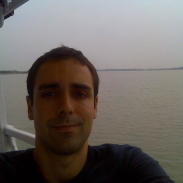Miquel Ros had been an information manager at Bloomberg when he started on a ‘side project’ to create an interactive map of his favorite cheeses, their origins, and their stories. Now, a year later, Ros, with digital design firm AIW Media, has developed GourmetOrigins.com, a platform that’s mapped more than 1,000 producers of gourmet food products throughout Europe.
Mapping is becoming an increasingly popular way of conveying information. Keep reading to see why Ros thinks mapping is a great way of understanding the fragmented food market.
Danielle Gould: What motivated you to start Gourmet Origins?
 Miquel Ros: I had always had a strong interest in the origins of the things I consume, particularly food. In 2009 I had been working for a few years in information management at a large financial services company (Bloomberg) and also started realising the potential of online platforms such as Google Maps to manage and visualize information. So, I felt the time had come to use technology to better understand the origins and the stories of my favourite foods. I joined forces with my venture partner that could take care of website development from a technical point of view with my concentrating on the general and strategic management of the project, and GourmetOrigins.com was started!
Miquel Ros: I had always had a strong interest in the origins of the things I consume, particularly food. In 2009 I had been working for a few years in information management at a large financial services company (Bloomberg) and also started realising the potential of online platforms such as Google Maps to manage and visualize information. So, I felt the time had come to use technology to better understand the origins and the stories of my favourite foods. I joined forces with my venture partner that could take care of website development from a technical point of view with my concentrating on the general and strategic management of the project, and GourmetOrigins.com was started!
DG: Could you talk a little about the design of your site? Why did you decide on mapping?
MR: I think maps are excellent tools to visualize information. We are focusing on a market that, by its very nature is very fragmented and where fact-finding can involve a lengthy information search, maps enable us to visualize a large amount of information in one glance. Plus, when it comes to quality foods, geography is key, most of the best products define its identity in geographical terms (Bordeaux Wine, Rochefort cheese, etc…), so why not then use maps as a primary search and story-telling tool?
DG: Why do you think people are interested in understanding the stories behind the food they consume?
MR: I think this is part of a broader trend towards greater personalization of the consumer experience together with a growing concern for health and the environment. Industrial mass-production has managed to bring to our homes an amazing diversity of goods from all corners of the world, quantity is taken for granted, so people are now increasingly looking for quality and for things that provide them something different, an experience. At the same time, the small producers in the agrifood sector have understood that the only way they can compete in a market with concentrated distribution chains and low agriculture prices is by trading up and highlighting and enhancing all those features that make them unique.
DG: Who and how large is your target market?
MR: We are looking at two sides of the market, on one hand, foodies, people concerned about what they eat, that want to learn more about their foods, that want to discover, explore, and experience unique foods. This is a several billion-euro market a year in Europe alone.
On the other hand, food producers and operators providing food-related experiences (there are several thousand of such companies in Europe alone), to whom we provide a platform for promotion and sales.
DG: What’s your business model?
MR: We are developing a marketplace where producers and providers of food related experiences can sell directly to foodies. This can be done either through our own e-commerce facility or through affiliate programs. We also have a premium listing feature for producers, that can get their own customized micro-site in our platform and get better visibility and value-added features for their comapny profile. We also run some advertising.
DG: Is there any interesting data you are aggregating as a result of your site?
MR: We expect to get a comprehensive picture of the state of the independent food sector and its adoption of technology as a marketing tool. We are also aggregating a number of resources, such as Twitter and other social streams that relate to each of the products we feature in order to give a social dimension to the food discovery experience.
Another area that we are working to develop is the integration of tracking technologies, for example bar-codes, as a way to access the information about different foods and products,doing this on a mobile platform would open a whole set of new possibilities and greatly facilitate access to the data we are structuring in our site.
DG: What is the toughest challenge you have faced?
MR: We are finding that some producers are still quite reluctant to consider adopting the internet (and technology in general) as a marketing tool. Hopefully there are always a number of “pioneers” in each area, and it is with these people that we are focusing our efforts to develop valuable partnerships.
DG: Do you have any words of wisdom for other entrepreneurs in this space?
MR: Be patient, unlike well developed sectors such as travel or financial services, food is a sector where consumer internet is just taking off, but I think the outlook is positive.



